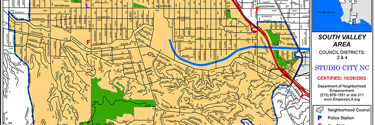- Login
- |
- |
- |
- |
Robert's Rules of Order

Robert's Rules of Order is the standard for facilitating discussions and group decision-making. Although they may seem long and involved, having an agreed- upon set of rules makes meetings run easier.
Here are the basic elements of Robert's Rules, used by most organizations:
-
Motion: To introduce a new piece of business or propose a decision or action, a motion must be made by a group member ("I move that......") A second motion must then also be made (raise your hand and say, "I second it.") After limited discussion the group then votes on the motion. A majority vote is required for the motion to pass (or quorum as specified in your bylaws.)
-
Postpone Indefinitely: This tactic is used to kill a motion. When passed, the motion cannot be reintroduced at that meeting. It may be brought up again at a later date. This is made as a motion ("I move to postpone indefinitely..."). A second is required. A majority vote is required to postpone the motion under consideration.
-
Amend: This is the process used to change a motion under consideration. Perhaps you like the idea proposed but not exactly as offered. Raise your hand and make the following motion: "I move to amend the motion on the floor." This also requires a second. After the motion to amend is seconded, a majority vote is needed to decide whether the amendment is accepted. Then a vote is taken on the amended motion. In some organizations, a "friendly amendment" is made. If the person who made the original motion agrees with the suggested changes, the amended motion may be voted on without a separate vote to approve the amendment.
-
Commit: This is used to place a motion in committee. It requires a second. A majority vote must rule to carry it. At the next meeting the committee is required to prepare a report on the motion committed. If an appropriate committee exists, the motion goes to that committee. If not, a new committee is established.
-
Question: To end a debate immediately, the question is called (say "I call the question") and needs a second. A vote is held immediately (no further discussion is allowed). A two-thirds vote is required for passage. If it is passed, the motion on the floor is voted on immediately.
-
Table: To table a discussion is to lay aside the business at hand in such a manner that it will be considered later in the meeting or at another time ("I make a motion to table this discussion until the next meeting. In the meantime, we will get more information so we can better discuss the issue.") A second is needed and a majority vote required to table the item being discussed.
-
Adjourn: A motion is made to end the meeting. A second motion is required. A majority vote is then required for the meeting to be adjourned (ended).
Note: If more than one motion is proposed, the most recent takes precedence over the ones preceding it. For example if #6, a motion to table the discussion, is proposed, it must be voted on before #3, a motion to amend, can be decided.
In a smaller meeting, like a committee or board meeting, often only four motions are used:
-
To introduce (motion.)
-
To change a motion (amend.)
-
To adopt (accept a report without discussion.)
-
To adjourn (end the meeting.)
Remember, these processes are designed to ensure that everyone has a chance to participate and to share ideas in an orderly manner. Parliamentary procedure should not be used to prevent discussion of important issues.



